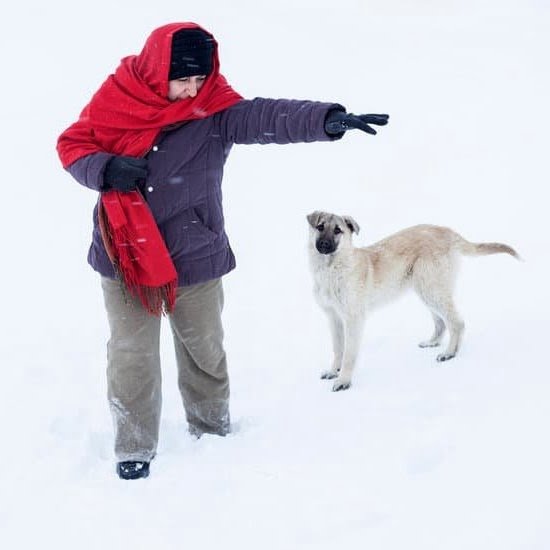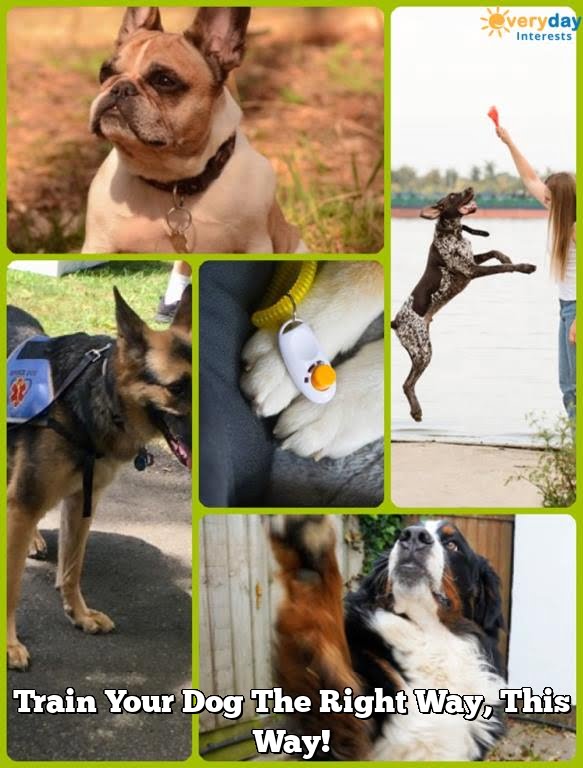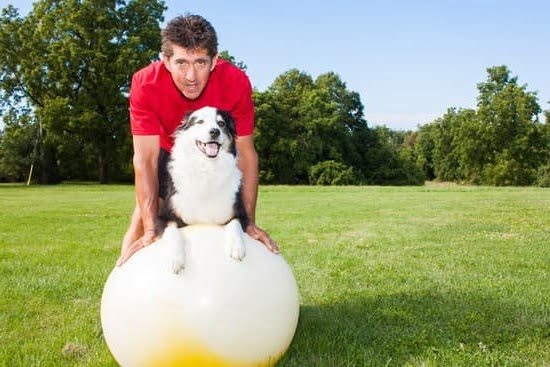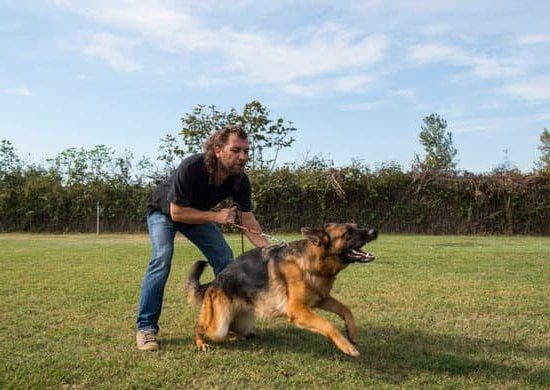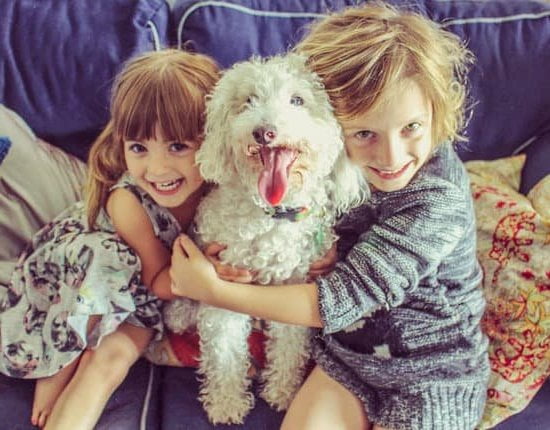Introduction
House training a dog can be a difficult process, but with patience and consistency, it is possible to successfully teach your pup to only use the bathroom outside. Before you begin this process, it is important to know the best practices when house training so that your pet can learn how to “hold it” in the most efficient and least stressful way for both of you.
Understanding Your Dog’s Schedule: One effective housebreaking technique includes establishing scheduled times for meals and potty breaks. To do this, figure out eating and drinking routines, as well as what time your pup typically needs to relieve himself throughout the day. After this information has been determined, create a reliable routine around these changes that involves meal times, potty breaks and play periods throughout the day.
Establishing Potty Spots: You should also set specific spots outside or inside where you would like your puppy to use the restroom. This spot should be used often at regular intervals during the day; if you consistently take them there after meals and/or playtime they will eventually start associating that area with having to go #2. Additionally, praising them when they use their chosen potty spot will reinforce good behavior whenever they do so.
Accidents Will Occur: While housebreaking your dog it’s inevitable that there will be accidents along the way. If this happens make sure not to punish your pet even if accidents occur as yelling or physical punishment can actually work against encouraging them to go in the right spot! Instead remain calm and remove any trace of urine using special shampoos or cleaning products as necessary. Then redirect their attention from whatever object they peed on by playing with a toy or taking them outside for puppy potty breaks immediately afterwards.
Conclusion: House training takes a lot of persistence but once your dog knows what is expected of them then there should no longer be any need for confusion! With dedication and proper understanding of how dogs learn habits, you should eventually achieve success in teaching your pup how to go “potty” where he is supposed to.
Identifying the Best Training Method for Your Dog
The best way to house train your dog and ensure successful results will depend heavily upon the individual pet’s personality, preferences and routines. When it comes to keeping a house clean, each pup is unique with different needs so owners should take time to understand and account for such factors. Age, breed and size are all important variables when considering the best training strategies, as well as any previously-formed habits or disposition towards other animals or people.
Owners should also consider which of the three common housetraining methods works best for their dog’s particular situation. The first involves setting up a consistent potty area outdoors where dogs are encouraged to use it through repetition, reward and confinement. Puppies can be taught this method by taking them outside at regular intervals for toileting activities. The second method requires using diapers or pads indoors in conjunction with outdoor visits for eliminating waste. This approach can work well for small breed dogs who may need additional assistance going outdoors due to weather or living conditions. Finally, crate training involves confining the pup in a small space that encourages elimination only outside while discouraging accidents inside the home. All of these methods can be effective if owners put in the time, consistency and patience necessary to reach success—considering all help from everyone that lives in the home is beneficial as well!
Developing a Consistent House Training Schedule
The best way to house train a dog is by developing a consistent house training schedule. Establishing a routine will help keep the dog accustomed and comfortable with their potty breaks. Start by setting strict times for when your pup goes outside, making sure to stick closely to the same time frames each day. Scheduling potty breaks after meals and naps is also essential. It is much easier for dogs to stick with a routine, so be sure to maintain consistency when introducing new elements such as walks and playtime into their schedule. During trial runs, always reward positive behavior that enhances your efforts in house training. Don’t forget to express love and patience especially when you both slip up along the way. As long as you remain committed, you will both get there soon enough!
Understanding the Benefits of Rewards and Positive Reinforcement
House training a puppy or adult dog is key to having an enjoyable and harmonious relationship with your pup. By using positive reinforcement and rewards, the process can be fun while creating a lasting bond between you and your furry friend.
When it comes to house training, positive reinforcement and rewards are more successful than punishing an animal for urinating or defecating in the wrong area. Rewarding good behavior with treats, cuddles, verbal praise, games or toys will inform the animal that a particular behavior is desired; over time, this will become instinctive for them. Additionally, offering rewards for not relieving themselves outside of their designated area helps give the dog an incentive to pay attention to where they are going to the bathroom.
Consistency is essential when it comes to house training; dogs respond best when given clear rules and boundaries which are then maintained throughout the house training period. Timing should also be taken into account; typically, puppies need to eliminate after every meal, nap or play session so it’s important not miss any opportunities for reward-based praises as this type of reinforcement will support long-term learning. One of the most effective ways of teaching puppies where to go ‘outdoors’ is by taking them outside frequently and rewarding them after each successful elimination experience.
In order for the house training process to be successful, it must always involve some element of positivity. This can come in many forms including playing games, giving treats, using special clickers or simply verbalizing kindness towards your companion – whatever works best for you both!
Dealing With Accidents and Setbacks During Training
Accidents and setbacks during house training can be discouraging, but it’s important to remain patient and consistent. If your dog has an accident in the house, do not scold them or punish them – this will only make them scared of going to the bathroom in front of you. Instead, focus on positive reinforcement when they go outside where they should go. If they have an accident inside, simply clean it up and keep moving forward. Try to take your pup outside at regular intervals throughout the day. Doing this will help ensure that they don’t need to go too badly the next time they do finally get outside. Also provide them with plenty of opportunities to reward good behavior by giving treats and praise when they go outside in the desired spot each time. Finally, even if there is a setback or puddle created by your pup while potty-training, stay focused and consistent with progress made to date and keep working until success is achieved!
Prepping Your Home For House Training
House training your dog involves creating a safe and comfortable space for them to learn the basics. Before you start teaching or reinforcing behaviors, it is important to prepare your home for house training. Start by creating designated areas within the home where they can and cannot go. These designated areas should be clearly marked off, such as with a baby-gate or with furniture, so that your pet can differentiate between their allowed spaces and forbidden ones. Make sure that all accessible areas of the house are safe for both you and your dog. This means blocking off any dangerous items like electrical cords, chemicals, and other hazardous materials. Furthermore, remove any potential hazards from these safe zones such as breakable valuables or food items that could attract pests. Preparing designated areas will give your pet the assurance that there are boundaries in place when learning new behaviors around the house. Establishing these limits sets good habits from the beginning and encourages positive reinforcement during potty breaks, play time, mealtime, etc.
Examining the Habits of Different Dog Breeds for House Training
One important aspect of house training a dog is examining the habits of different breeds for the best approach to use. Widely used house training techniques that rely upon rewarding positive behavior and punishing negative behavior may be effective when applied across many dogs; however, understanding the specific nature of each breed is paramount in establishing successful techniques.
For instance, herding breeds such as border collies and Australian shepherds may exhibit unusual levels of energy and require more vigorous activity than other breeds in order to stay focused on learning commands. Breeds that thrive on physical attention, such as labradors and golden retrievers, may be more likely to respond positively to rewards-based house training efforts. Understanding the unique characteristics these breeds is key towards setting up the right environment for everybody’s success.
In addition to differences between breeds, there may also be significant differences between individual dogs within a given breed. As such, it is important for owners to pay close attention to their own animal’s traits and behaviors in order to tailor their house training approach accordingly. For example, some dogs take better than others to being verbally corrected or offered treats upon completing desired behaviors. Similarly, some people find that having multiple varieties of treats available helps keep their pet motivated during sessions while others prefer fewer options.
Dealing With Problems and Disruptions During Training
When house training a dog, it is important to be prepared for potential problems and disruptions. It’s normal for a new pup to have accidents in the house, but with consistent training and care, they can learn quickly. When your pup has an accident indoors, don’t scold them or show them any displeasure – this will only confuse and scare them and can create further tension in the house. Instead, focus on rewarding them for using the potty in the correct places and routines, so that they start to understand that these areas are where they should go to do their business. Additionally, make sure you are providing plenty of opportunities for exercise and mental stimulation during crate time or when left alone for long periods of time. This will help keep your pup from becoming bored and uncomfortable which could lead to further disruptive behavior inside the home. If all else fails, seek out professional help if you need more tips or guidance on how to better house train your pup.
Understanding Common Mistakes New Dog Owners Make When House Training
Many new dog owners make the mistake of not having a set house training routine. Establishing a routine is essential for quickly teaching your pup where and when it is appropriate to relieve themselves. Set feeding times and bathroom patterns, like after meals or naps, and have them go outside in the same area each time so they can recognize that area as the ‘bathroom’. Immediately after your pup goes to the bathroom outside, reward them with treats or gentle praise in order to reinforce positive reinforcement-based house training.
Another common mistake is ignoring signs that your pup needs to be taken out immediately. Ignoring these signs or delaying trips outdoors will make it difficult for your pup to understand the proper place for elimination over time. In addition, not keeping an eye on your puppy when indoors can also make house trainings frustrating. When indoor supervision is needed, use baby gates or crates as an effective way of limiting their range of movement and making sure they’re out of trouble until potty breaks! Lastly, punishing your puppy for accidents should never be part of house training; it will only result in a scared pup who won’t want to poop at all for fear of what could happen next. Instead, always reward your pup right away when they do something right during potty training.
Ultimately remember that there will be accidents here and there while house training but don’t get discouraged! With patience, consistency and the understanding that puppies take some time before getting the hang if it all you can successfully house train any pup — big or small!
Conclusion
The benefits of having a well house trained dog are immense. Firstly, your home will remain clean, with fewer accidents and messes to clean-up. This long-term benefit saves time and energy which can be better spent on providing quality care to your pet. Additionally, a house trained dog is easier to transport and take with you on trips as they tend to follow directions better and cause less disruption in public places. Also, when properly house trained, dogs are able to socialize better with other people and dogs outside the home, leading to improved behavior in unfamiliar environments. Last but not least, being well house trained gives your pet the respect it deserves in the human world – no judgment or any other forms of mistreatment from peers or strangers alike thanks to the fact that this animal understands that rules apply not only at home but everywhere else too. In short, becoming well house trained means giving your pet the tools it needs for a longer and happier life!

Welcome to the blog! I am a professional dog trainer and have been working with dogs for many years. In this blog, I will be discussing various topics related to dog training, including tips, tricks, and advice. I hope you find this information helpful and informative. Thanks for reading!

